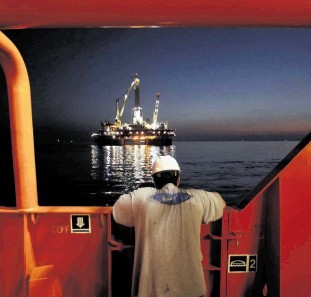
In the aftermath of the Macondo incident it was rapidly recognised that, perhaps because of an impressive record of drilling without incident, the offshore industry had failed to focus on the potential impact of a well control incident in deepwater.
Action needed to be taken to improve the ability of the industry to respond to incidents and a number of joint industry initiatives were set up in various oil producing regions to examine and improve existing operational procedures and to develop new hardware.
In particular, it was recognised that the solution which ultimately halted the flow of oil from the Macondo well was a capping device – this is a mechanism which can be attached to the wellhead or BOP (blow-out preventer) to control and ideally halt the well flow.
However, BP’s capping device was assembled only after the incident occurred.
Regulators in the UK and the US now expect operators in appropriate cases to demonstrate that they have access to such devices before drilling permits are granted.
The industry has therefore harnessed its expertise and energy to ensure that well capping systems are immediately available in the very unlikely instance of such an incident occurring.
In the Gulf of Mexico, two separate initiatives were established:
o One group of operators established the Marine Well Containment Company (MWCC), a not-for-profit organisation available to all deepwater Gulf of Mexico operators willing to join, which has developed, and provides access to, the Interim Containment System (“ICS”). The centrepiece of the ICS is a capping stack but it also provides containment facilities.
o The Helix Well Containment Group is a consortium of 24 deepwater operators, representing half of oil production in the GOM, who have also developed a deepwater well-containment response system, including two caps based in Houston, capable of being immediately deployed by members in the event of a deepwater spill.
Wild Well Control has also developed its own Global Subsea Well Containment System which includes a subsea capping stack.
The cap is based here in Aberdeen and is available to operators on the UKCS by way of an Equipment Access Agreement.
Here in the UK, Oil & Gas UK set up the Oil Spill Response Advisory Group (OSPRAG), an unprecedented collaboration between oil companies, contractors, oil industry organisations and the unions.
I wrote last year in this column about some of the work to come out of OSPRAG but part of the “toolkit” of options which it developed was the OSPRAG capping device, unveiled at last year’s Offshore Europe.
Access to the device is obtained by subscription through Oil Spill Response Limited (OSRL), an industry-owned co-operative and the largest global provider of oil spill response and preparedness services.
The latest addition to the industry’s arsenal is the Subsea Well Response Project (SWRP). SWRP, made up of nine major oil and gas companies, has planned a new integrated intervention system and is now collaborating with OSRL to turn this plan into a reality so that companies across the industry have an opportunity to benefit from enhanced international capabilities.
We at CMS have been supporting SWRP on this project.
OSRL has contracted Trendsetter Engineering to construct four standardised capping stack toolboxes capable of handling a variety of scenarios and Oceaneering to develop two subsea dispersant hardware kits for the subsea application of dispersant at the wellhead, debris clearance and BOP intervention.
SWRP will provide project management support to OSRL during the construction phase. The first equipment is due to be completed by the end of 2012.
During 2013, the equipment will be moved to four strategic storage locations – in Northern Europe, South America, Africa and Asia-Pacific.
As recent events on the Total-operated Elgin platform have shown, being able to respond to every eventuality remains a challenge – and priority – for the industry.
The new devices being developed are not suitable for every circumstance, but they are a positive development that means the industry is now much better prepared to respond to a well control incident from a subsea wellhead. But innovation doesn’t stop here. The industry’s commitment to improving well safety continues.
From the legal perspective this is important for several reasons. Let’s here consider just two. First, an operator must have financial and technical capability to operate, as evidenced for instance in safety case and environmental impact assessment and bound by our North Sea “goal setting” legislation.
An operator therefore must try to do as much as possible to be prepared to meet potential risks and avoid criticism and/or liability.
Second, when considering applications for drilling consents, both UK and US regulators now expect operators to have access to capping devices and this trend it likely to spread to other jurisdictions.
The SWRP initiative to increase availability of capping devices around the world is evidence of the industry moving ahead of the regulators to ensure high standards of preparedness to deal with potential well control incidents.
Penelope Warne is head of energy at international law firm CMS Cameron McKenna
Recommended for you
